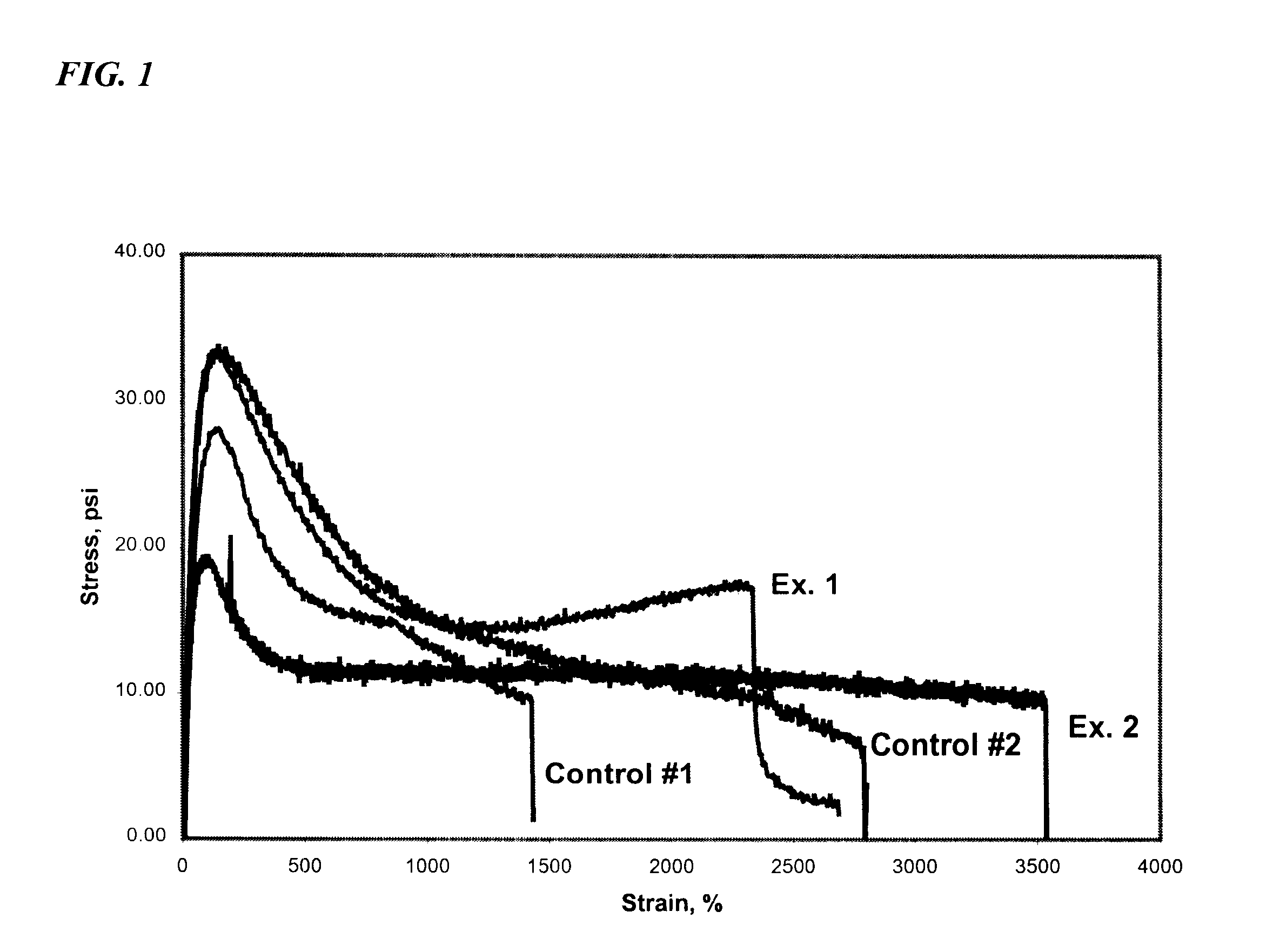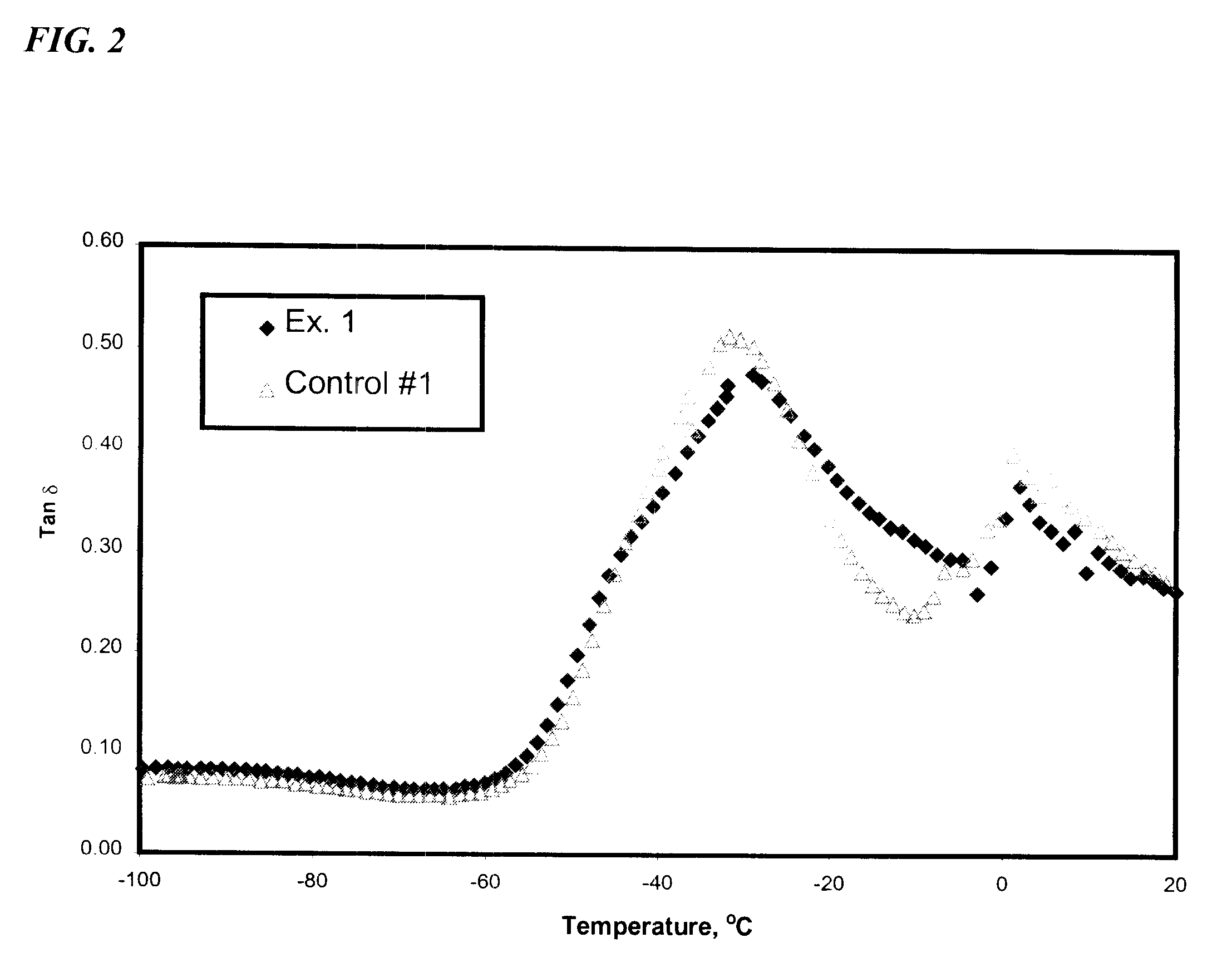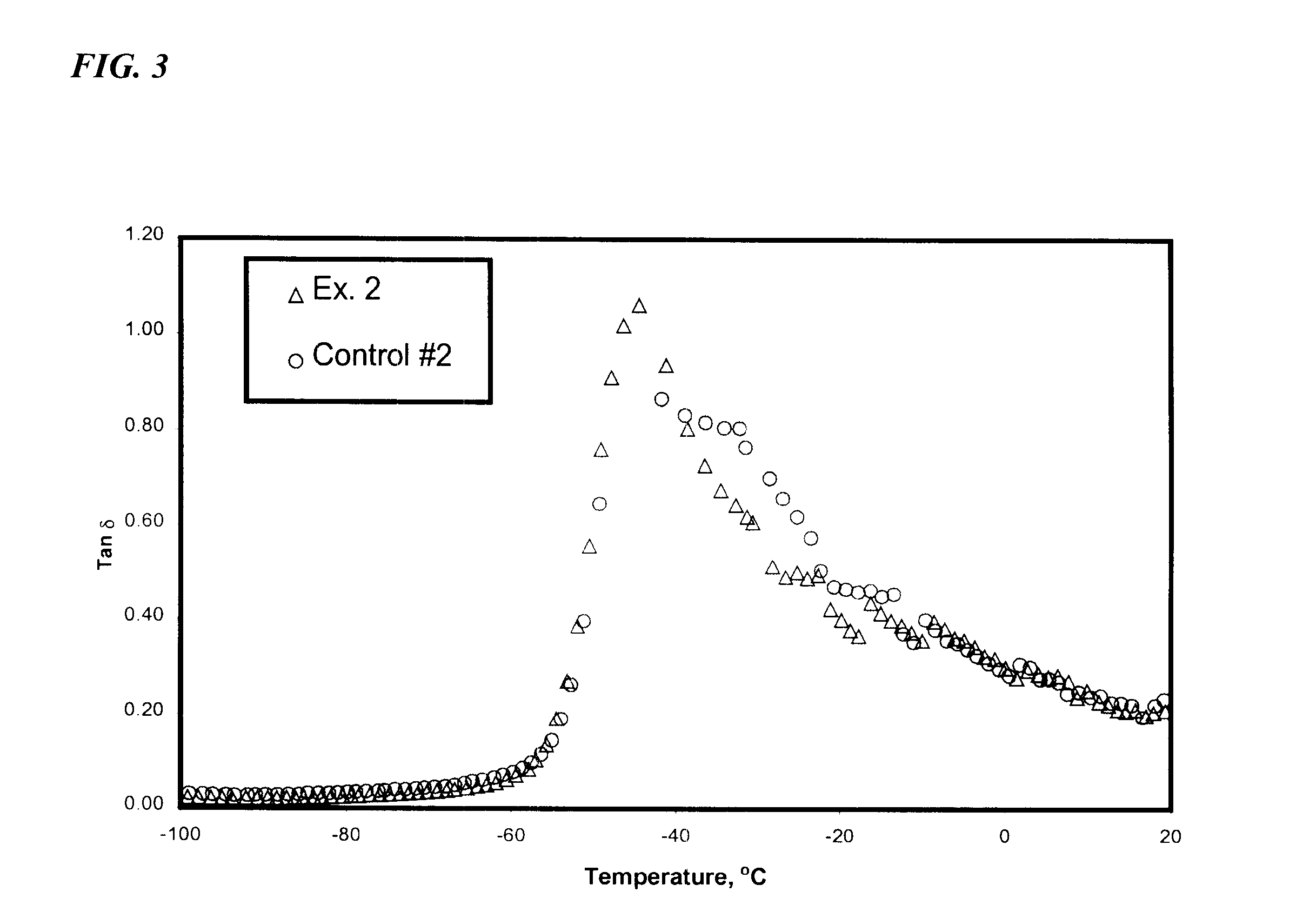Polymer blend compatibilization using isobutylene-based block copolymers
a technology of isobutylene and polymer blend, which is applied in the field of polymer blend compatibilization using isobutylene-based block copolymers, can solve the problems of gross incompatibility of individual polymers with a consequent inability to produce and maintain homogeneous fine phase sizes, gross inhomogeneous blends generally have very poor combinations of properties, and the free energy of mixing is unfavorabl
- Summary
- Abstract
- Description
- Claims
- Application Information
AI Technical Summary
Problems solved by technology
Method used
Image
Examples
examples 1 and 2 (
Ex. 1 and Ex. 2) in Table 1 (numbers expressed in parts by weight) are blends containing the block copolymer compatibilizer and control examples 1 and 2 (Cont. 1 and Cont. 2) do not.
where Irganox 1010 is a stabilizer (Ciba Geigy).
Tensile stress-strain measurements were performed on these four blends using micro-dumbbell specimens at a test temperature of 25.degree. C. and an Instron cross-head speed of 2" / min. As shown by FIG. 1, the incorporation of tbS-iB-tbS into PIMS / Budene.RTM. 1207 and PIMS / Natsyn.RTM. 2200 blends increases the strain at break and the maximum stress near the break point. Dynamic thermal mechanical measurements using 1 Hz frequency and 2.degree. C. / min heating rate were also performed on these four blends to determine how tbS-iB-tbS affects the phase behavior. These measurements are known to those skilled in the art and commonly used. FIGS. 2 and 3 show the loss tangent (.delta.) as a function of temperature for the PIMS / Budene.RTM. 1207 blend and the PIMS / Nats...
PUM
| Property | Measurement | Unit |
|---|---|---|
| Percent by mass | aaaaa | aaaaa |
| Percent by mass | aaaaa | aaaaa |
| Percent by mass | aaaaa | aaaaa |
Abstract
Description
Claims
Application Information
 Login to View More
Login to View More - R&D
- Intellectual Property
- Life Sciences
- Materials
- Tech Scout
- Unparalleled Data Quality
- Higher Quality Content
- 60% Fewer Hallucinations
Browse by: Latest US Patents, China's latest patents, Technical Efficacy Thesaurus, Application Domain, Technology Topic, Popular Technical Reports.
© 2025 PatSnap. All rights reserved.Legal|Privacy policy|Modern Slavery Act Transparency Statement|Sitemap|About US| Contact US: help@patsnap.com



